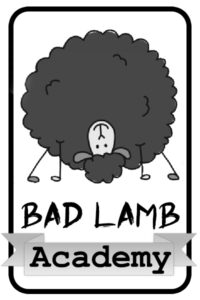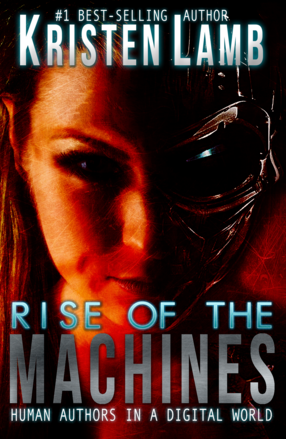We have been discussing Deep POV, and yesterday I mentioned hating flashbacks with the power of a thousand suns and promised to explain why next post.
Yay! Here we are.
So you want to be a writer. Okay. I’ll be blunt because that’s my superpower. Check your conscience at the door keyboard. Writers are not civilized humans. In fact, we are the opposite. We are the reptilian brain to the power of a million. We probe and prod and poke the weak places.
Great storytellers are nothing short of sadists. We take a perfectly empathetic/likable person, toss their life in a Vita-Mix and blend, churning that mixture from Level 1-1000.
That is called conflict.
Stories are about people with problems to be solved. Everything else is a travel brochure.
One of the reasons I LOVE teaching craft is I get to see the work/stories of other writers. Last time I held my First Five Pages class (which there is a NEW ONE open *wink, wink*), I could hear the collective groans when I said, “NO FLASHBACKS. EVER.”
But, I am a benevolent dictator and instructed those submitting pages, that if they believed they positively-absolutely-must-have the flashback and had no idea how to extract it? Send it anyway.
One of my students sent her pages and they were the best example I have seen about WHY I hate flashbacks. Fabulous story and the flashbacks absolutely killed it.
***And, so you know the student was cool with me using this example and later fixed the story per my suggestions and it was successfully published.
😀
HOOK
We’ve talked before about how to hook readers. It doesn’t have to be a bomb, a car chase, a murder. In fact, some of the best tension is in the everyday and it is even more intense because regular people can relate. Most of us can’t relate to a bomb ticking down but two words—Family Reunion. One word—WEDDING.
This writer’s story began with a poor wedding planner trying to herd badly hungover bridesmaids to a wedding (in Mexico). She is trying to repair dresses, cater to a prima donna maid of honor, and placate a bride who is passive and used to others walking over her.
Between trying to get enough outlets in a hundred-year-old church, bridesmaids barfing on their shoes, and a meddling mother of the bride, we have the perfect STEW of DRAMA and a FANTASTIC HOOK! Perfect understanding of in medias res.
We feel compassion for the poor wedding planner and worry if she will get these sick-half-drunk girls to the wedding without using a stun-gun on someone.
I was RIVETED…and then the author went back and explained how the wedding came to be held in Mexico.
ER????
NO, I WANT TO SEE A BRIDESMAID PUKE IN THE FLOWER ARRANGEMENTS!
This sample of writing was fantastic, but she did two things that undermined her piece.
NOTHING Should Work
When the wedding planner gives the bridesmaids Pepto, it makes them feel better. Okay, I will go with that. But to enhance this? It makes them feel better…moments before at least one of them (or ALL of them) barfs pink all over the wedding planner’s bag, or the bride’s veil, or the bouquet. Now, the problem isn’t only the sickly maids and bride, but how the heck can the wedding planner get out of THIS?
Character is demonstrated by solving (or not solving) problems REAL-TIME. We do not need to go back in time to explain or tell what kind of person the protagonist is. She didn’t need to go back and tell me about the protagonist’s character when she could easily show me in the current timeline.
Since wedding planner is the protagonist, maybe she has been through this before and just as the bride is about to have a breakdown because her veil is ruined? Wedding planner pulls out…a spare.
She always orders two after that wedding she put together in Oklahoma where the chain-smoking bride set fire to her own veil (showing she is calm and resourceful).
Whatever.
So when you put your characters in any scenario, ask, “Can I make it WORSE?” Then make it worse. Then ask that question again and again until you can’t make it worse without making it weird (I.e. sudden alien abduction in a Women’s Fiction).
Part of becoming a writer is to train out any human sensitivity. When we make life easier on our characters, we are doing it because WE feel tension and are seeking to alleviate that. Ah, but TENSION is the fuel of fiction, so do the opposite of what civilized humans would do and MAKE IT WORSE.
Flashback Fizzle
I could tell this writer was doing a SUPERB job of winding our nerves tighter than a Hollywood facelift. How? She backed off to explain…using a flashback.
When we feel the need to use a flashback and go back in time? Often we are reacting to tension we’ve successfully created and now y’all might see why I feel flashbacks are bad juju. Fiction is all about conflict. No conflict no story. No tension? Good place to stop reading.
How many of you have jerk friends, family or acquaintances? Or all of the above? Or maybe you’ve had a moment where you’ve shown your butt? I have all of the above. What do we do to ease others? To make them relax?
We explain.
Sorry about my Mom. She’s not been the same since my father died.
Ok, so we leave out the part that Dad died 15 years ago. It works. It makes others give grace to Mom for acting like a horse’s behind.
I apologize for blowing up like that. I had a flat tire, migraine, no sleep, allergy medicine overdose, etc.
EXPLAINING is what civilized humans do to break the tension. STOP IT! CUT! CUT! CUT!
All of us will feel a NEED to explain why a character is moody, angry, broken, bawdy, whatever. DON’T. Resist the urge to EXPLAIN. In fact, if readers don’t know WHY, they will want to turn pages to find out WHY.
Frankly, as writers, we are GOD, so we really don’t have to explain ourselves anyway. Let the readers suffer until the very end, when you finally allow resolution. Suffering is good for readers (and book sales).
***And, like anything, I am sure someone somewhere used a flashback and it was AWESOME. Like any writing “rule” we can break this one, too. But, we have to know the rules to break the rules 😉 .***
Flashback Fodder in Real-Time Adds Mystery
When this writer flashed back to explain how the wedding ended up in Mexico instead of Mom’s choice (Napa Valley), she inadvertently missed two opportunities:
1) Increase tension.
2) Show character.
If she’d had this flashback information revealed real-time, Mom could have come in, seen the sea foam green bridesmaids (faces and dresses matching) and thrown a fit. “THIS is why I wanted to have this in Napa. It’s Montezuma’s Revenge. I told you wine country was a better choice. Why don’t you ever listen to me?”
The poor bride, who never stands up for herself is defeated and losing ground on what should be HER day. Wedding planner can come to the rescue and usher Mom out with the skill of an ambassador in a war zone (or try and fail). Either way, we LIKE her for trying.
THIS is “Show don’t tell.” Having critical information from a flashback in the current thread of time allows readers to see people act and react. It makes us wonder. It makes us tense. We want to ease the pressure and the only way to do that is to KEEP READING and HOPE it will eventually all turns out for the better.
Most Backstory CAN Be Told Real-Time…I Promise
One major reason new writers rely on flashbacks (aside from a possibly weak/flawed/nonexistent plot OR as a tension release) is that there is something that happened earlier the writer wants to share. Backstory.
A lot of writers don’t give readers enough credit. We believe we need to travel back in time to explain the backstory or the reader won’t “get” what’s going on. They will.
Let’s take a quick look at one of yesterday’s hastily assembled examples of Deep POV.
Fifi clutched the baby picture, the one her daughter had given her a week ago for Mother’s Day when they picked her up from rehab. Ninety days clean. At least that was the lie she’d packed along with her swimsuit and the hairspray can with the secret compartment and the only pills they hadn’t found.
The pills that were now gone.
They should have already been at the resort, the one staffed with eager friends willing to help her out. Friends with first names only who took cash and asked no questions.
Fifi scratched at her arms. Millions of insects boiled beneath her skin, invaded her nerve endings and chewed them to bleeding bits. Pain like lightning struck her spine, the section crushed then reconstructed. Pain like lightning spidered her brain, frying her thoughts. She glanced again at the baby picture, then at the fine young woman in back. Her daughter Gretchen.
What am I doing?
Maybe she would be okay. Maybe she hadn’t had enough pills to completely undo her. Maybe she could ride this out. And maybe I’m the Queen of England.
Gretchen bent between the seats and kissed her on the cheek. “I love you, Mom. You okay?”
Tears clotted her throat. She nodded. “Yes, I’m fine, Honey.”
“You mean it?”
She hesitated then smiled. “Yes. Yes I do.”
She tucked the baby picture in her shirt pocket, close to her heart and opened the van door. She needed air. She also needed to change their plans. Visit somewhere with no friends. With no one who took cash.
Look at ALL the stuff we learn without having to go back in time. We learn the time of year. That Mother’s Day was a week ago. That the family picked up Fifi from rehab. We learn she has an addiction to pills that is bad enough she has special drug-hiding containers. We later realize she has suffered a serious injury that crushed part of her spine.
You guys get the idea. We don’t need to go back to her being picked up from rehab. We don’t need to go back to the car accident or the fall or the ambush by ninjas wielding large sticks to see HOW Fifi was hurt. None of that is salient to the current story problem aside from fleshing out the character.
In fact, if I have my addict stranded with a broken down car and STOP and rewind to explain how she injured her back? Odds are it would just confuse you.
The story is about a family breaking down on the way to a vacation destination. Taking side trips back in time is distracting, redundant, confusing and makes the conflict fizzle.
Now y’all know why I take away your flashbacks. I am being mean, but it’s good for you. Flashbacks will ease your nerves, but is it worth losing the reader? And we often don’t recognize we are doing this. Even I have to go back through my writing and hunt for places I backed off the throttle because I was uncomfortable.
We will talk more about flashbacks in the coming posts because, as I mentioned yesterday, often what folks believe is a flashback is actually unorthodox plotting (I.e. parallel timelines).
What are your thoughts? What makes you tense? Do you find you fall in love with your characters and go too easy on them?
Before we go, y’all asked for it so here goes. I have two classes coming up. The class on log-lines Your Story in a Sentence—Crafting Your Log-Line is $35 and as a BONUS, the first ten sign-ups get to be victims. IF YOU ARE QUERYING AN AGENT, YOU NEED A PITCH. I will pull apart and torture your log-line until it is agent-ready for FREE.
Beyond the first ten folks? We will work out something super affordable as a bonus for being in the class so don’t fret. I’ll take good care of you. AND, it is two hours and on a Saturday (June 27th) and recorded so no excuses 😛 .
I am also running Hooking the Reader–Your First Five Pages. Class is on June 30th so let’s make Tuesdays interesting. General Admission is $40 and Gold Level is $55 but with Gold Level, you get the class, the recording and I look at your first five and give detailed edit.
Our first five pages are essential for trying to attract an agent or even selling BOOKS. Readers give us a page…maybe five. Can we hook them enough to part with cold hard CASH? Also, I can generally tell all bad habits in 5 pages so probably can save you a ton in content edit.
I LOVE hearing from you!
To prove it and show my love, for the month of JUNE, everyone who leaves a comment I will put your name in a hat. If you comment and link back to my blog on your blog, you get your name in the hat twice. What do you win? The unvarnished truth from yours truly. I will pick a winner once a month and it will be a critique of the first 20 pages of your novel, or your query letter, or your synopsis (5 pages or less).
Remember, for MORE chances to win and better ODDS, also comment over at Dojo Diva. I am blogging for my home dojo and it will help the blog gain traction.
For those who need help building a platform and keeping it SIMPLE, pick up a copy of my latest social media/branding book Rise of the Machines—Human Authors in a Digital World on AMAZON, iBooks, or Nook.











70 comments
5 pings
Skip to comment form
Having done the First Five Pages class, i can heartily recommend it.
It’s even more useful if you can accept the advice Kristen offers.
I get it. Totally. I do, but i’m pulling my hair out here now because in my current 100,000 WIP, i have a 25yr old that grew up with a controlling narcissistic mom and i wanted to show what her mom did to her as a kid and i do have 3 short (1 page) flashbacks to show what her mom did to her when she was little. I made them quick, funny and interesting. Is that still horrible? I want to show the mom (who’s quite a piece of work). I CAN have the POV tell someone, but i thought this would be more interesting. They are in their own scenes by themselves so they dont pull you out in the middle of the current scene.
SO: The scene ends, new chapter or scene, that one page flashback is in, then that ends, and then next chapter. Bad Juju? :O
Author
My question would be “How is it relevant to the real-time story?” And why can’t it be blended into the real-time narrative?
It can be, i just though it was more interesting to SHOW them fighting, then for the POV to TELL someone. This is a coming of age novel, and she is torn between her mask of trying to be cool, popular and impress people, and being her real self which her mom always puts down.
Author
Why can’t they fight real-time? Crazy people always bring up the past. “This is just like the time you did X!” “I was FOUR and you set my barbies on fire!”
HAHAHA! LMFAO! I’m sitting in the middle of the cafeteria laughing out loud by myself. Just got the strangest looks. I will try that. Thanks. You’re a pissa!
I like what you have to say and see how you made the writing stronger in your examples.
Just wondering, though, about the stories that have successfully used flashbacks: Forrest Gump, for example, which was a popular movie, and also Fried Green Tomatoes. Don’t you think sometimes a story can successfully use flashbacks?
Author
Those are not flashbacks. Those are examples of parallel plot lines. They are unorthodox plotting, which we will talk about 😀 .
First off, that blog image is just disturbing and funny and disturbing again. LOL
I can appreciate this post. I don’t think I have any flashbacks in my WIP, but since it’s a story from my childhood, I’ve had to rewrite things and look at how to increase tension and dialogue to grip the reader more in my edits. This was kind of a fun, new way to think about that editing process. Thanks Kristen!
Off next week for my first ever writers retreat – a graduate class creative nonfiction course. So pumped! Happy writing!
I have a deep appreciation for this and your last post. Not only will it help me re-organize, but it will cut a lot of words and lead to better details later. Thank you.
IN my current manuscript I have the heroine trapped on a Ice Pack with her dogs floating in the cold North Atlantic ocean – her parents are away, and a Guard from the cove, they all live in, sits at a COM awaiting a call to her parents they she is drifting away, lost.
For one paragraph the guard recalls when the mother had caused a similar incident – a long tome ago – WELL captured and in trouble.
THen I quickly move on
I put it in to slow the tension of the first 15 pages – a long, long, long, wait to tell her parents – well actually a few seconds – but it seemed that way to him
Yes, I’m in your course; but this happens on page 18, ha, ha, missed me.
Sorry! by slow down I mean hold the tension as he waits to talk to the parents
Amazing post! Thx
I have one flashback…I’m ripping it out! You’re right. It’s not needed. Can’t wait to take your “First Five Pages” class! Woohoo!!
So,,,letters, journals, court transcripts, old case files–these are all a form of flashback and, therefore verboten?
Author
Depends on how they are used. We will talk about how journals and letters can be used in plotting.
Alien abductions in Women’s Fiction? I might read that, but of course, I am rewatching X-Files right now.
This definitely makes me want to go back through my MS and see if I’ve let a few of those slip in. But how much is considered a flashback? One page? A paragraph? Do we have to start with ‘I remember when….’ or go straight to a Wayne and Garth flashback with full on sound effects and a scene in italics? lol. I’m serious. I want to know what I’m looking for? Thanks 🙂 Great post.
Reblogged this on youarebeingloved and commented:
Some much needed advice on gripping readers’ attention in your fiction.
Very eye-opening.
As a plus, the writer is witty, she’ll leave you laughing at yourself and correcting those mistakes you’ve probably already made.
Have a good read! 🙂
BAD flashbacks are bad. Catch-22 was full of flashbacks and it’s great.
Author
I will have to look, but I wouldn’t say that Catch 22 uses flashbacks. I would say uses non-chronological plotting, which isn’t the same thing. “English Patient” does a similar thing. You think it uses a lot of flashbacks when it is actually creative manipulation of the timeline and unorthodox plotting.
Reblogged this on Aspirations of Flight and commented:
Some very great thoughts on flashbacks, back story, and character tension/motivation.
Reblogged this on AKA Little Blonde Girl and commented:
This entire series is worth the read. Great info!!
I carved out my flashbacks. So hard. So needed.
I swear while in beta it was slumping right there. Once gone, people called it a page turner.
Ugh. The struggle is real.
Reblogged this on xdayschocolate.
This is good advice for genre fiction, but the literary world uses non-linear structure for more than just “filling in backstory”. Oh, and flashbacks can show. They don’t have to be telling.
Author
Non-linear structure isn’t necessarily what I feel counts as a “flashback”. But we will talk more about unorthodox plotting as we continue.
A flashback is a type of non-linear structure. And it isn’t unorthodox. Novelists have been using forms of non-linear structure, particularly the simplest forms since the beginning of the written word. Think The Odyssey. That’s pretty old and most of the story is told through a flashback. Good thing Homer didn’t read your advice.
Author
Yes, but a lot of devices that were standard or acceptable years ago won’t fly in 21st century commercial fiction. Even Catch 22 is a book from over 50 years ago and it is also literary fiction (which can do what it wants). Deus ex machinas was used for centuries, too but will get our book tossed in the slush pile. And when I say “unorthodox” I mean it isn’t a standard forward-moving timeline. Manipulating time is a literary device, but one that should serve forward momentum of the story, not filler to give us backstory that can be folded into real-time. Yes, the Odyssey was great and it is a classic, but we would have a tough sell writing like that today.
I’m working on a story that’s inspired by the lives of my great-grandparents – the conflict being caused by great-grandma’s alcoholism. The thing is, no one in my family knows why she was the way she was. So I’m creating my own backstory of why she was such a heavy drinker. I’m revealing it through minor ways, such as when she’s asleep (and fighting a hangover), her daughter, Frances, hears her talking vaguely in her sleep about the abuse she endured as a child. But Frances doesn’t understand because it’s similar to the abuse SHE receives.
Anyway, I realized that flashback definitely wouldn’t work because half the reason this story is so intriguing to me is because we don’t know why she was so mean. My readers would probably appreciate the same suspense. 🙂
My current WIP starts with my MC receiving a fatal gunshot wound to the head. Making his night get worse from there is taking some ingenuity, but by golly I’m having fun with it!
My other WIP (between drafts at the moment) has the MC remembering snippets of her previous/ ‘ordinary world’ life when faced with a massive contrast, e.g. if I’d stayed at home I’d be curled up by the fire eating crumpets instead of freezing in this muddy ditch – does that count as a flash-back, or is that increasing tension as it shows more pressure on the MC to give up & go home?
Author
I don’t think I would nail that as a flashback. And some flashbacks CAN be used and be okay. David Morrell used a very brief flashback in his book, “Murder as a Fine Art” but it was SHORT. And, I actually think it could have been cut, but it worked all right.
Reblogged this on 10 Minutes Past Coffee and commented:
Today Kristin Lamb blogs about the annoying Flashback in fiction writing. I have to admit, I am NOT a fan of the flashback and I’m happy to say that most of my favorite, auto-buy authors never use them.
You make a lot of sense here. However, I was really glad to see you reply to another commenter and mention parallel plot lines. The story I have been writing has those. I am going to have to rethink it though as I have a parallel plot line for each of the two main characters and it’s become “messy”.
But, you know what these stories can be like – they insist on being told sometimes.
Looking forward to reading more of your blog 🙂
Author
I will cover unorthodox non-linear plotting and explain how it is different and not what I would label a “flashback.” Glad you are enjoying 😀 .
In screenwriting, flashbacks are considered lazy ways of giving information. If you really, really must use a flashback, make sure it’s moving the story forward. Old news is just that. Old news.
Yeah, I agree; flashbacks BAD. I do a metric ton of worldbuilding/characterization beforehand – and often while writing the story, more comes to me – but most of that stuff (at least from a writing point of view – isn’t stuff you need to tell the reader; it’s there for YOU, so that YOU know how to write your character(s). Hate flashbacks in books, hate flashbacks in movies!!
In my first novel, a little girl was supposed to be murdered. When it came time to write that part, I found I was incapable of killing a fictional child. It made me uncomfortable to the point where I agonized over finding a way around it. Eventually I did find a way around it via a plot twist that I think worked, but it was a lot of maneuvering to avoid something that made me personally uncomfortable.
Very interesting post.
I got a lot out of it. My story has been really tough to navigate, and your example was a real eyeopener for me.
And, now I’m off to buy Catch 22 and The English Patient to find out more about non-chronological plotting!
Author
You can also watch “Fried Green Tomatoes” or “The Joy Luck Club” for something faster and visual.
Try Arundhati Roy’s The God of Small Things. It’s completely non-linear, but it makes sense, because in the end, the MC figures out what happened in a huge event of her childhood, which is the momentum of the story.
Does the same hold true for flash forwards? Give a taste of the end of the book and then use the rest of the book to tell how you got there and then finish?
Author
I think any time we shift time, we have to be careful. It can confuse the reader and break tension. “The English Patient” was a great movie and book, but I will be honest. The ONLY reason I watched the movie was it won an Oscar and it took THREE times for me to finally gut through and finish. When I DID? I loved the movie because Act Three tethers all the timelines together. Before that? I was so confused and miserable. AND the only reason I bought and read the book was because I still really didn’t understand the story. Same with “The Hours.” Great literature, but the hopping all over time gets tedious and will lose people. If I hadn’t been determined to study and learn these pieces, I would have given up and dismissed them as dreadful movies (books).
This is a fantastic post. I’m going back through my novel and checking it twice (for those sneaky flashbacks, of course.) ?
Reblogged too. Thanks Kristen!
Reblogged this on jademphillips and commented:
Flashbacks taking over? Check out why Kristen Lamb says they’re a no no!
I opened this post with the thought “there’s nothing wrong with a flashback” in my head. As I read further, I had to concede that actually, the methods you describe are a lot better at maintaining tension and the reader’s attention.
Thanks for your advice 🙂
I’m flashback free. I’m sure I have all kinds of other problems though.
Kristen, as always, I love how you dispense your wisdom in such a hilarious way. I mostly agree with all your advice, so don’t comment all that often. Maybe I should comment just to say Yes!, I agree! and I love you! So sorry I’ve been remiss in being positive over the years. I even mostly agree with this advice, but I think it falls a little short, and here’s why…
All your examples are spot on as to why one shouldn’t use flashbacks. However, every one of them are used in the wrong place, at the wrong time, to show the wrong thing. Most writers have no idea how to get into, and out of, a flashback or back story. They are very tricky to do successfully. This is why, in my opinion, most flashback fail, and it can drive a caring writer to pick up an ax and go hunting. So, for beginning writers, I would agree not to use flashbacks simply because you will most likely use them incorrectly. While it’s definitely true that stories don’t need flashbacks, if used appropriately, in the right place, at the right time, they can be enriching devices to expand your story, plot, and characterization. Russian writers come to mind. I use flashbacks from time to time, but I don’t cause the forward momentum of the real-time story to crash to a halt while I’m giving backstory. (No pun intended. :-P) I’ve pulled flashbacks because I couldn’t fit them into the storyline successfully. Because you’re such an excellent writer, and understand the craft well, maybe you could show folks how to enter and exit a flashback so that it does work, rather than taking away a handy tool from their writer’ toolkit altogether.
Author
Well, when we get into bending time and unorthodox plotting, I will go over this. Yes, there ARE ways to use flashbacks. It CAN be done, but there are ways to do them that doesn’t derail the momentum. I tease about NEVER, EVER using them because if we approach flashbacks with the notion they are almost always VERBOTEN, when we DO use them, we are very careful about how we use them and relentless about testing if we really, really DO need one.
“All of us will feel a NEED to explain why a character is moody, angry, broken, bawdy, whatever. DON’T.”
Exactly. Shakespeare never gave an explanation for why Iago was evil — he just was. Othello continues to be popular. Sherlock Holmes vs. Professor Moriarty is still compelling, though Moriarty’s drive to be evil is never explained either.
Some writers spend too much time thinking about what information they want to ccommunicate to the readers, without considering what information readers are actually going to give a damn about.
Thanks for this interesting post. My book “Samantha” tells the story of a young woman forced into prostitution in the city of Liverpool. At one point in the narrative Sam is lying in bed unable to sleep. Her mind goes back to how she was forced into prostitution by her pimp, Barry. I am not sure whether one would classify this as a flashback? None of my reviews mention this episode so I have no way of knowing what my readers think of the use of this flashback if, indeed it is a flashback. Kevin
As always, this is a great post, generating much thought and discussion.
I’m using your “non-linear time line” thing in my WIP. The house where the story takes place has been in the family a long time, and it becomes a fairly major character as the family considers the loss of it. Each of the characters has had some “growing up” time there, and the place becomes important to them all for the same reasons, but with different stories. It’s a “coming of ages” story. I don’t want to say, “. . . and the house was very important to all of them. . . ” The flashbacks come as whole chapters and contain their own building tensions, as we see the grown up characters and how they got there. I believe it’s working.
Your opinion on the utility of flashbacks is eloquently stated as usual but I must to some extent disagree with you. I find that effective story telling can not be bound within the constraints of inflexible rules. In my novel Ghosts in the Heart-a romantic fantasy that may or may not involve time travel-I used an entire flashback chapter to explore why a coldly efficient police detective has spent his adult life lovingly obsessed by a dead actress he has never met. Could I have done it differently? Of course but I will always believe that the method I choose best imparted the information I wanted the reader to gain while also furthering the darkly romantic emotional tone the novel was intended to possess. So I suppose my best response to your discussion is “Yes,but..”
Author
LOL. Well, I jokingly say never use them EVER (and then say, “Oh-KAY some DO work.”). Going back in time is fine. Just most times people do it WRONG and for the WRONG reasons. We’ll talk more about this, but yes, I know sometimes they DO work 😛 .
I’ve seen flashbacks and time jumps used within another flashback. It’s dreadful.
I’ve got my work cut out for me. I just signed up for Hooking the Reader – Your First Five Pages. I know a great deal when I see one. I want to sign up for the Gold Level, but it only gives the $40 option. Let me know how you want me to send the other $15.
I think this class is just what I need to get cracking on my YA novel. It’s been lonely and neglected for too long. I’m so looking forward to doing an overhaul on my first five pages. 🙂
I usually agree with your observations, so when I read the title of this, I was surprised. Still, reading on, it turns out that I still do agree, haha! XD Flashbacks for the sake of explaining something instead of letting the reader experience something … No thanks.
My first (well, not my first, but the first public) novel has a lot of what I thought were flashbacks when I started writing it, but they’re really not. The narrative is set in two timelines; a present one with a fairly simple story arc and a past one which repeatedly impacts everything that happens in the present and changes the reader’s perception of it. I guess that is what you would call “unorthodox plotting” rather than actual flashbacks?
Author
I wouldn’t call that a flashback. So yes we area still in agreement 😀
Yay! Then I can safely keep writing my non-flashbacks. 😉
Oddly enough, I just read the first few pages of an MS that started with a great wedding hook — the groom turned up dead when the bride was at the altar. A short bit of great pandemonium, then the author decided to back up and write about the hen party the night before!
Reblogged this on writerlyscrawls and commented:
You know you want to read about why flashbacks are the devil’s playthings. Now if you’ll excuse me, I need to check my manuscript for flashbacks to destroy.
You’re right on every point here, and yet I have two working drafts that include flashbacks. My first projects to do so. I wrote them the whole time thinking “I’m not supposed to do this!” Some I ended up cutting, but writing them helped ME to develop the story further. Those scenes I fed in details throughout the current. For the one MS I’m a bit hesitant to remove them all, because the flashbacks are to days earlier in the week, so it’s more I’m telling the story out of order as a device than to say go back in time to show a memory.
So I agree with you and also I am clearly going against the same advice 🙂
Finally, someone explains in words I understand why most flashbacks are BAD! You rock, Kristen.
Curious: Do you feel that way about flashbacks in movies, too, Kristen?
Author
Flashbacks are considered weak writing in screenplays. In fact, in “Silence of the Lambs” the director had contemplated a flashback showing when Jodi Foster stole one of the lambs that was going to slaughter, but then they had her act out the trauma relaying the event in dialogue and nixed the idea. It was far more powerful keeping it real-time and letting the actress do her job. Now, I WILL say that I am not including non-linear structure in this opinion. Also, some genres like mysteries might be able to do it well. But, as a general rule, the great screenplay teachers will say to work to avoid them.
Yet, I WILL say that flashbacks are easier on an audience in film because we are far more PASSIVE. The visuals are supplied so we aren’t trying to keep up with a new cast in a new time in a different setting the same way as when we read. In text, that is far more taxing.
I’m really glad I stumbled across this post! I’m part way through my first novel, and I had originally decided to write the story backwards if you like, starting with where the character is now and going through a series of flashbacks for how she got there. I decided on reflection that this jumping around felt messy and the cut offs felt all wrong. I am now writing it in real time and it is working much better!
Debbie
http://www.myrandommusings.blogspot.com
I love long objective flashbacks, as already used by French romantic Victor Hugo in Les Misérables. Ergo, I can’t be deterred from writing in a similar way. It is paramount for me to prevent the identification of readers with characters, which is only necessary in character-driven fiction, anyways. Objective anachronies are one great step away from the characters towards the underlying impersonal ideas and concepts.
Author
Eh, knock yourself out.
Hmm, one of my beta reading clients referred me here and now I’m hooked! I wanted to find a really good post on flashbacks for another client but–wouldn’t you know?–this all applies to my own writing too. Shoot. Oh well, hurt me with the truth and all that stuff…
[…] interesting post arguing that in almost every instance flashbacks ruin fiction, (https://warriorwriters.wordpress.com/2015/06/12/why-flashbacks-ruin-fiction/). Do people […]
[…] From Kristen Lamb’s blog post: […]
[…] « Why Flashbacks Ruin Fiction […]
[…] describes the difference between the key event and the first plot point, Kristen Lamb explains why flashbacks ruin fiction, and Linda Clare lays out exactly what to show and what to […]
[…] surely to be as categorical as Kristen Lamb (Why flashbacks ruin fiction) is excessive. One day, perhaps, I’ll make a conscious decision to construct a book with […]